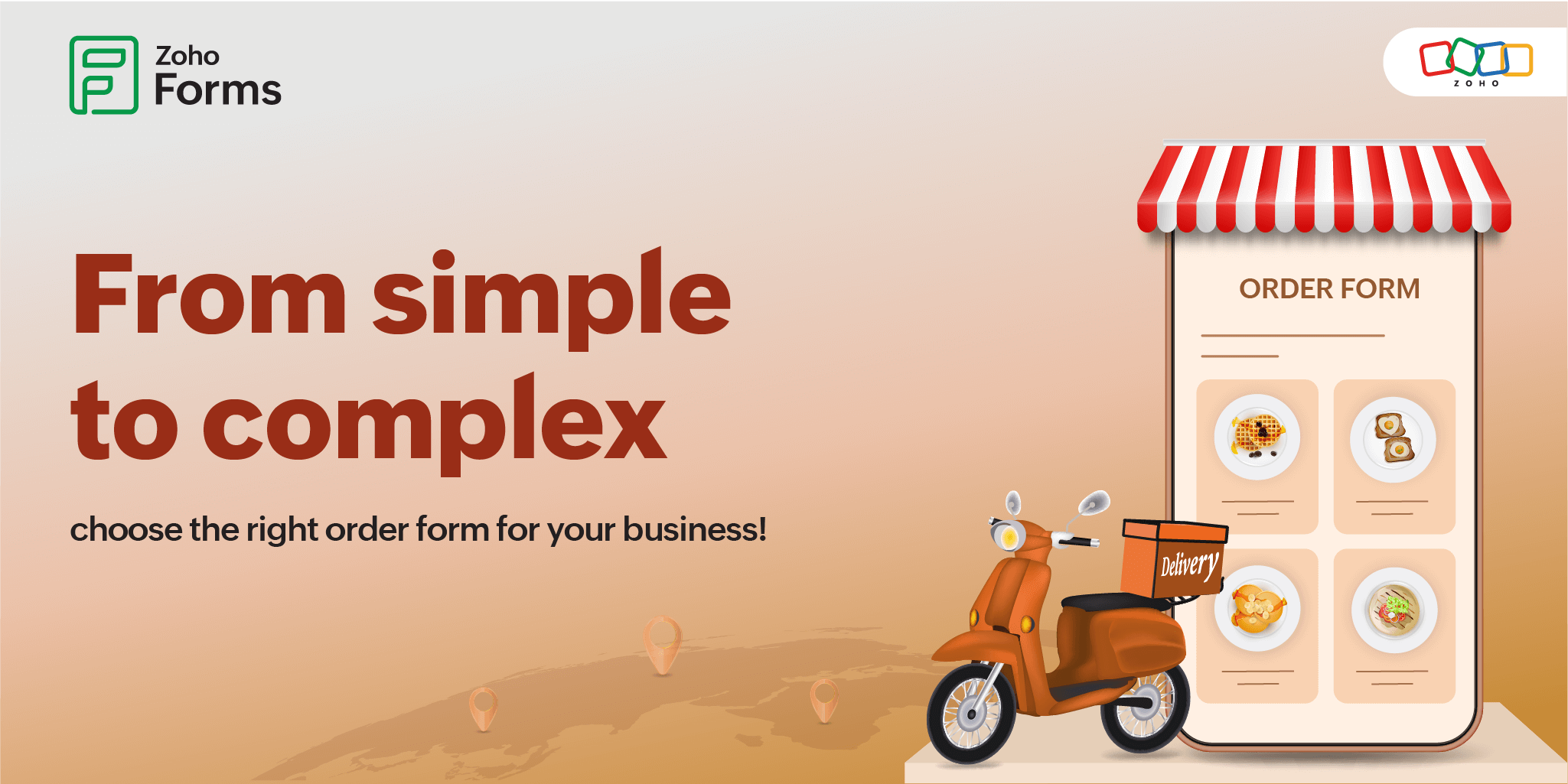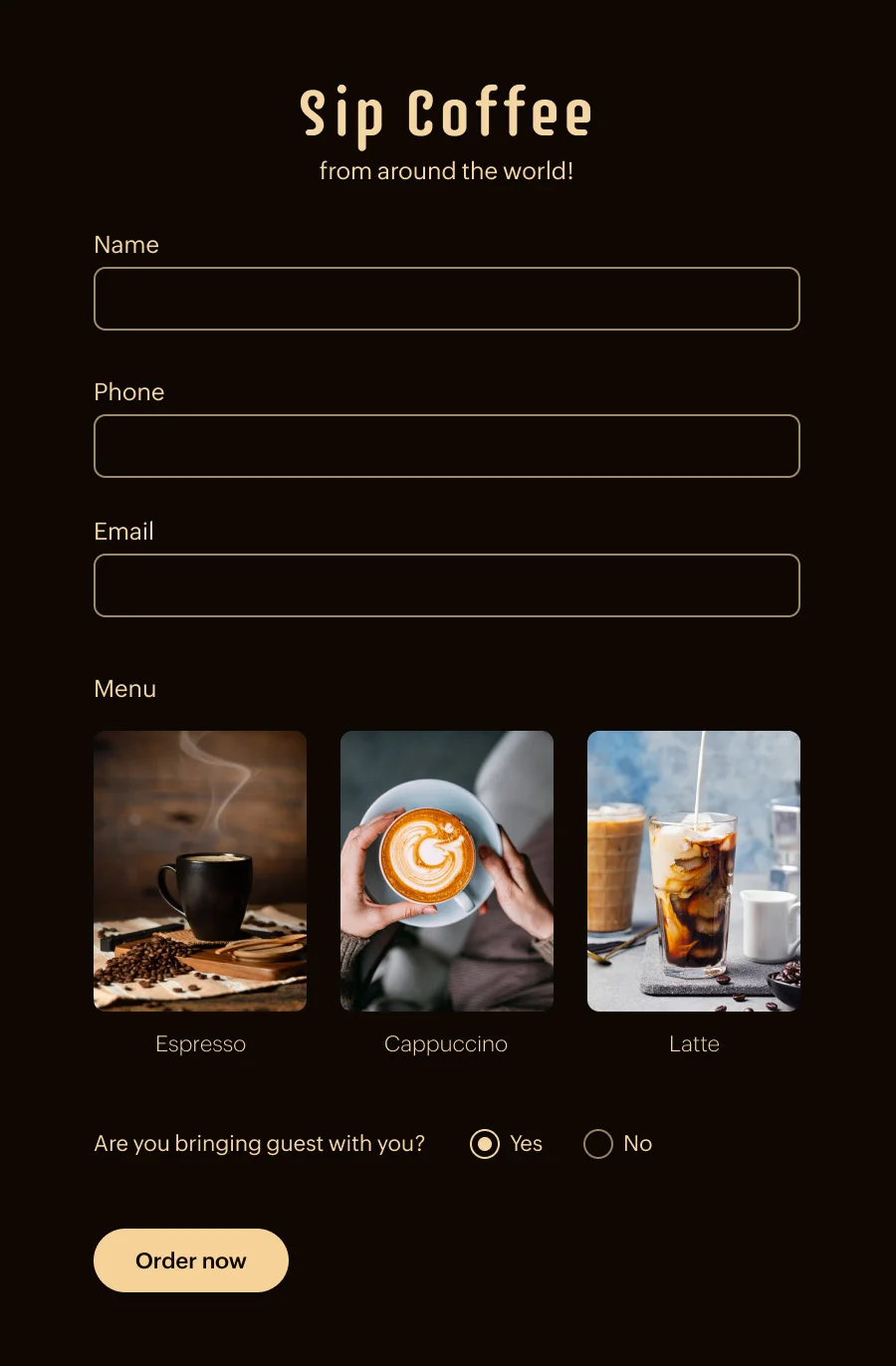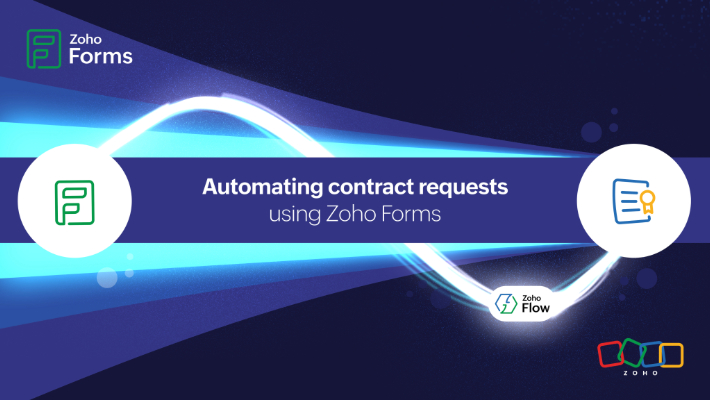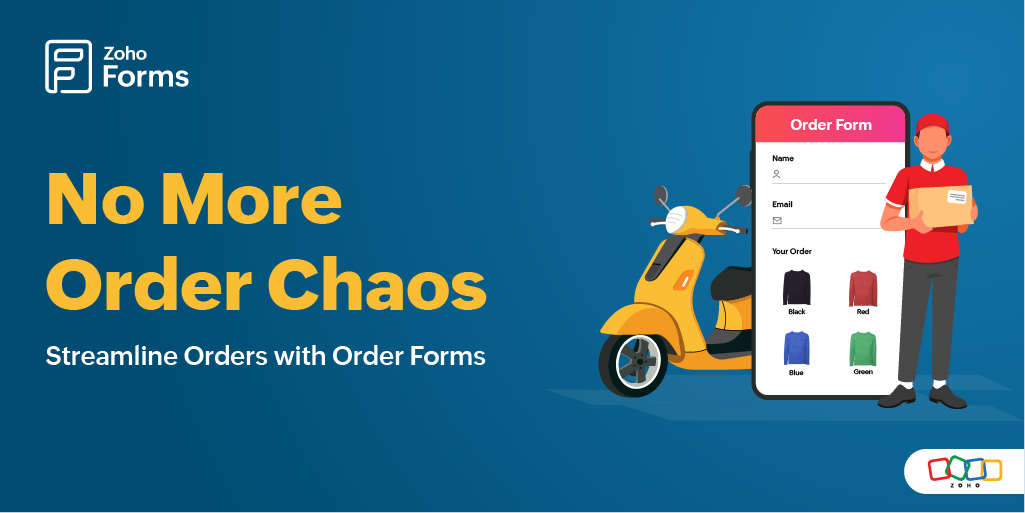- HOME
- Best practices & Guides
- What are the different types of order forms?
What are the different types of order forms?
- Last Updated : March 12, 2025
- 195 Views
- 4 Min Read
Remember that childhood lemonade stand where you proudly displayed a hand-drawn sign listing your refreshing beverage and its price? That, my friend, was your very first encounter with the mighty order form.
Fast-forward to today, and order forms are the workhorses of countless businesses, from e-commerce giants to local bakeries. But beyond the basic "product, quantity, price" structure lies a fascinating world of order form complexity.
Keeping it simple with basic order forms
A customer strolls into your bakery, craving a slice of your famous blueberry pie. They know exactly what they want, and all they need is a quick and easy way to place their order. This is where a simple order form comes in!
Perfect for businesses with a limited product or service offering, these forms are designed for straightforward transactions. There’s no complex options or lengthy fields to navigate. Customers can quickly select their desired product, specify the quantity, and provide their essential billing information. This translates to a smooth and frustration-free ordering experience, which will keep your customers happy and coming back for more.
Whether it's a coffee shop purchase or a quick payment at a farmers' market, simple order forms work wonders for in-person transactions. They allow for efficient order processing, which will reduce wait times and keep your lines moving smoothly.

So, what information does a simple order form typically capture?
- Name, email address, or phone number.
- A concise way for customers to choose the specific product they want from a drop-down menu or radio button options.
- Quantity to specify how much of a product they desire.
- Payment processing
In the next section, we'll explore the world of medium complexity order forms, which are designed to handle situations when a little more information is required.
Mastering medium complexity forms
Imagine you're browsing a custom t-shirt website. You've found the perfect design, but you want it in a specific color and a size larger than usual. Simple order forms wouldn't cut it here. This is where you’ll need a form that’s a little more complex than a basic order form.
These forms cater to businesses with a wider product range or situations where capturing additional details is crucial for order fulfillment.
But when should you consider using a medium complexity order form? If your products offer personalization options, this type of form allows customers to configure their orders to their exact specifications.
Let your customers explore their inner designer! These order forms can incorporate fields like drop-down menus, color pickers, and multiline fields to allow customers to personalize products. This will help boost customer satisfaction and create a more engaging shopping experience. For example, a company can upload their logo for custom printed t-shirts, or an architect can specify exact measurements for bespoke furniture.
And there's more...
Do you offer bulk discounts or tiered pricing based on quantity? Include quantity selection fields like dropdowns that automatically update prices based on the chosen quantity of a product to keep your customers informed.
Offer a variety of payment method options that can cater to different customer preferences and ensure a smooth checkout process. This flexibility is key to maximizing your sales potential.
Remember, medium complexity forms strike a balance between simplicity and functionality. In the next section, we'll delve into the world of more complex order forms, tackling situations where even more intricate details are required.
Complex order forms
Does your business operate in a realm of intricate product configurations, vast product ranges, or specific customer requirements?
Think large-scale equipment orders, custom manufacturing requests, or complex service packages. These businesses require complex forms to provide a structured way to capture all of the necessary details for accurate quotes and efficient order fulfillment.
Assume you have a furniture company that allows customers to personalize every aspect of their dream sofa. Complex forms can handle upload functions for design specifications, material selections, and intricate measurements. You can calculate pricing dynamically based on the chosen options, and even generate customer quotes with transparent pricing breakdowns once a form is submitted.
Why are they called complex, yet smart forms?
These forms are masters of adaptation. They often utilize multiple sections, each dedicated to capturing specific aspects of the order with conditional logic. This means customers can navigate through different sections based on their choices, ensuring the form captures only the information relevant to their specific order. This targeted approach keeps things streamlined and avoids overwhelming customers with irrelevant details.
Include a subform to place multiple orders from within the same form. Assume you run an online bakery where customers can easily add multiple cakes to their order using the subform. For each cake that they add, they can choose the quantity, their desired flavor, filling, frosting, and decorations from a list of drop-down choices for flavors, checkboxes for fillings, and a text field for special requests.
Do you offer complex pricing structures that cater to custom orders with variable costs? Complex forms can incorporate them with fields specific to performing complex calculations. The form can even automatically generate a personalized quote on form submission, fostering transparency and streamlining the sales process.
You can seamlessly integrate with various business systems to streamline the order processing workflow. For example, customer data captured during the ordering process can be automatically synced with your CRM, creating a comprehensive customer profile for future interactions.
So, which order form is right for you?
The world of order forms might appear complex, but with the right knowledge, you'll be well on your way to choosing the perfect form for your business needs.
- Basic forms are ideal for businesses with a limited product offering and straightforward transactions.
- Medium complexity forms cater to businesses with a wider product range or require additional details for order fulfillment.
- Complex forms are the ultimate tools for businesses dealing with intricate product configurations, custom orders, or highly regulated environments.
No matter your choice, you can streamline your ordering process, boost customer satisfaction, and watch your sales soar. Happy selling!















